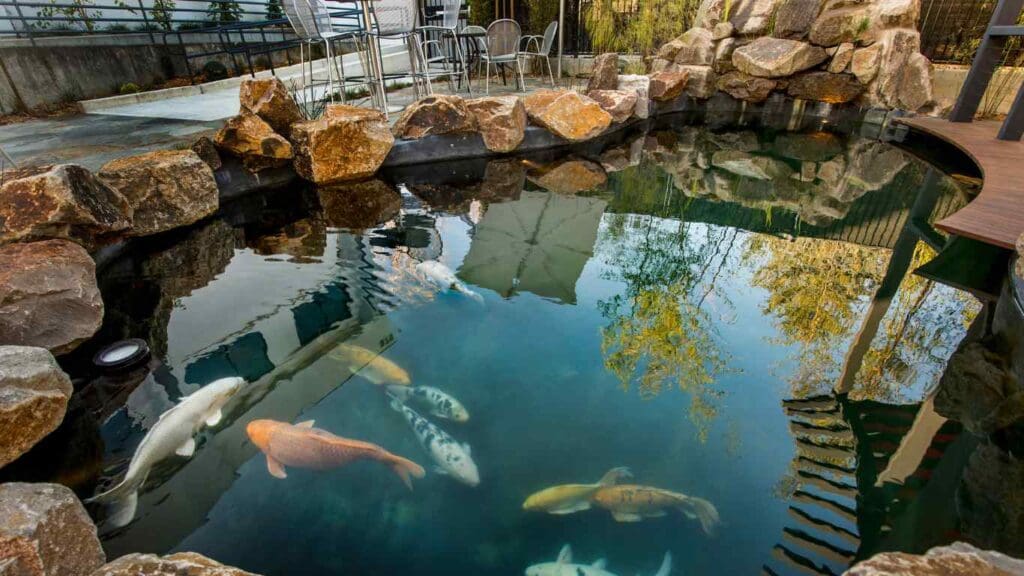Opening your koi pond in the spring requires some preparation and attention to detail. To ensure a smooth process, consider following a guide like ‘How to Open Your Koi Pond in the Spring’. Before you begin, it’s important to monitor the water temperature to ensure it’s stable between 50-55°F. This is crucial for the health and well-being of your koi, as they are cold-blooded animals and need the right conditions to thrive.
To get started, you’ll want to begin water filtration and re-install your pump or skimmer. Check that all the mechanics are working properly with proper flow, and if you have a waterfall, double-check that nothing is stuck in the impeller. It’s also important to reassemble any hoses and other water runs, inspect them for damage, and repair or replace as required. Once everything is in place, test to ensure that everything works properly. Following the steps outlined in the guide will help ensure your koi are healthy and your pond is ready for the warmer months.
How to Open Your Koi Pond in the Spring- Core Insights:
Opening your koi pond in the spring requires careful preparation and attention to detail. Here are some key takeaways to keep in mind as you get your pond ready for the new season:
By following these key takeaways, you can help ensure that your koi pond is ready for the spring season and that your fish are happy and healthy. Remember to always monitor the water temperature and keep up with regular maintenance to keep your pond in top condition.
Understanding Koi Pond Basics
Before you start opening your koi pond in the spring, it’s important to understand some basic concepts about koi ponds. Here are some key points to keep in mind:
- Water temperature is crucial: Koi are cold-blooded animals, which means their body temperature is regulated by the temperature of the water they live in. As such, it’s important to monitor the water temperature before doing anything to your pond. Wait until the water temperature is stable between 50-55°F before you start any maintenance tasks.
- Filtration is essential: Koi ponds need good filtration to keep the water clean and healthy for your fish. There are several types of filtration systems available, including mechanical, biological, and chemical. Make sure your filtration system is in good working order before you start the spring cleaning process.
- Aeration is important: Koi need oxygen to survive, and aeration helps to increase the oxygen levels in the water. There are several ways to aerate your pond, including using a fountain, waterfall, or air stone. Make sure your aeration system is working properly before you start the spring cleaning process.
- Water quality is key: Koi are sensitive to changes in water quality, so it’s important to keep the water parameters stable. Test your water regularly for pH, ammonia, nitrite, and nitrate levels, and make adjustments as necessary. Keep in mind that changes in water temperature, feeding habits, and other factors can affect water quality.
By keeping these basic concepts in mind, you’ll be better prepared to open your koi pond in the spring and keep your fish healthy and happy.
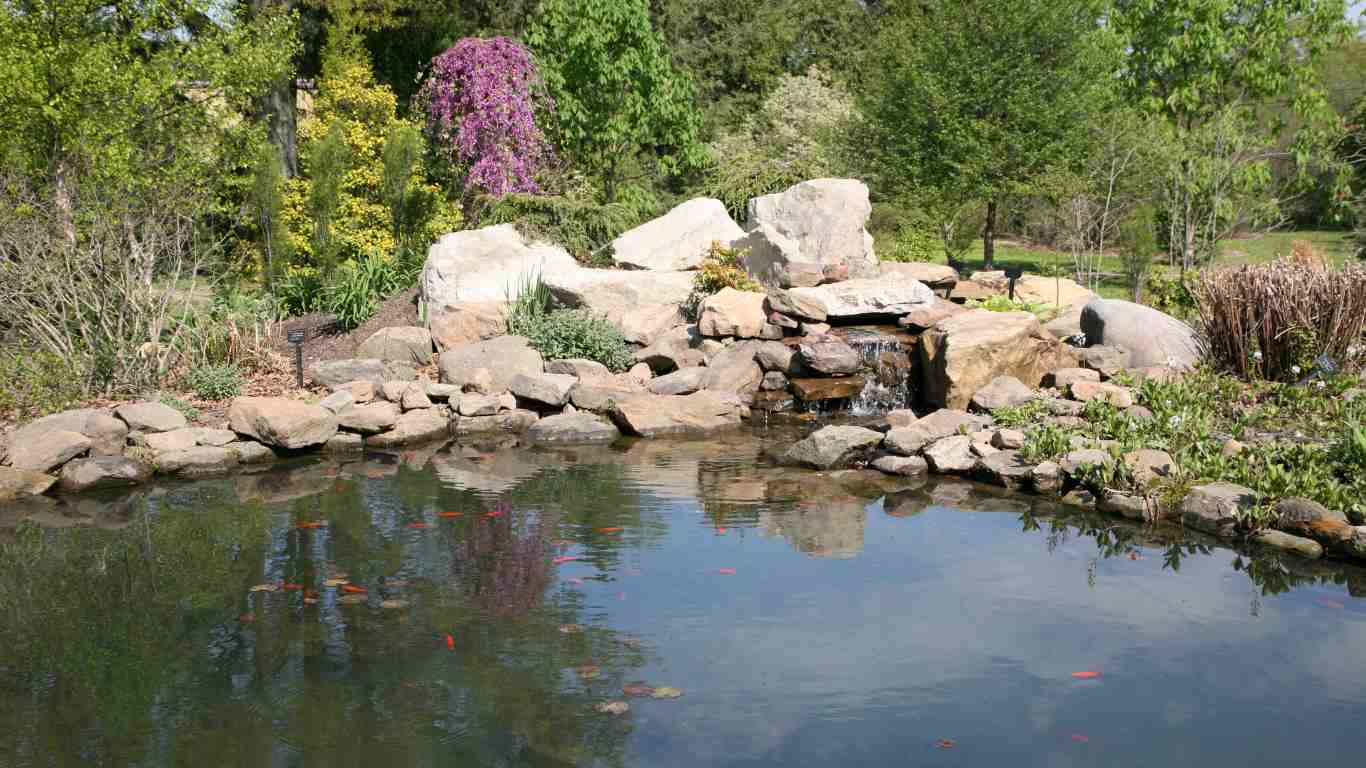

Choosing the Right Location for Your Koi Pond
When planning to open a koi pond in the spring, choosing the right location is crucial to ensure the health and happiness of your koi fish. Here are some factors to consider when selecting the location for your koi pond.
Sunlight Requirements
Koi ponds require the right amount of sunlight to thrive. Too much sunlight can cause excessive algae growth, while too little sunlight can stunt the growth of your fish and plants. Ideally, your koi pond should receive sunlight for at least 6 hours a day.
It is recommended to place your koi pond in a shaded area, as this can slow down the growth of algae and prevent the water from getting too hot during the summer months. If you choose to build in a sunny area, consider building some type of arbor to provide shade for your koi pond.
Proximity to Trees and Plants
The location of your koi pond should also be considered in relation to trees and plants. Falling leaves and debris from nearby trees can quickly accumulate in your pond, causing water quality issues. It is best to place your pond away from trees or to install a pond net to prevent debris from entering the water.
Plants can also be a great addition to your koi pond, but they should be carefully selected and placed. Some plants, like water hyacinth and hornwort, can provide shade and oxygen for your fish, while others can be harmful to their health. Make sure to research and choose plants that are safe for your koi fish.
When choosing the location for your koi pond, consider these factors to ensure that your fish will thrive in a healthy and happy environment.
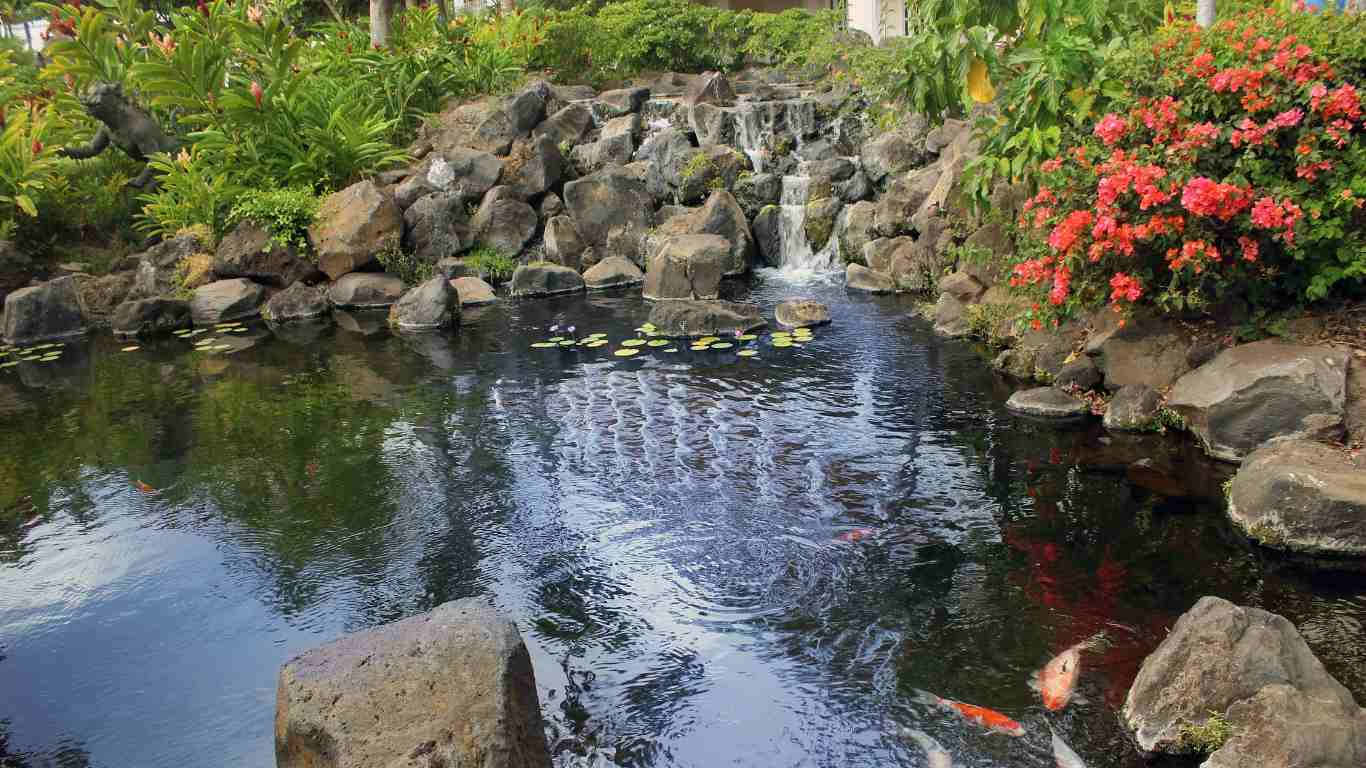

Designing Your Koi Pond
Designing your koi pond is an exciting process that requires careful planning and consideration. A well-designed pond will not only provide a beautiful and relaxing space for you to enjoy, but it will also create a healthy and comfortable environment for your koi to thrive.
Size and Depth
One of the most important factors to consider when designing your koi pond is the size and depth. Koi are active fish that require ample space to swim and grow. As a general rule, your pond should be at least 1000 gallons and have a depth of at least 3 feet. However, larger ponds with more water volume are always better for koi.
Shape and Style
The shape and style of your koi pond should complement the overall design of your backyard or garden. Rectangular or oval shapes are the most common, but you can also opt for a more natural-looking pond with irregular shapes and curves. When choosing a style, consider the materials you will use to construct your pond, such as rocks, boulders, and plants.
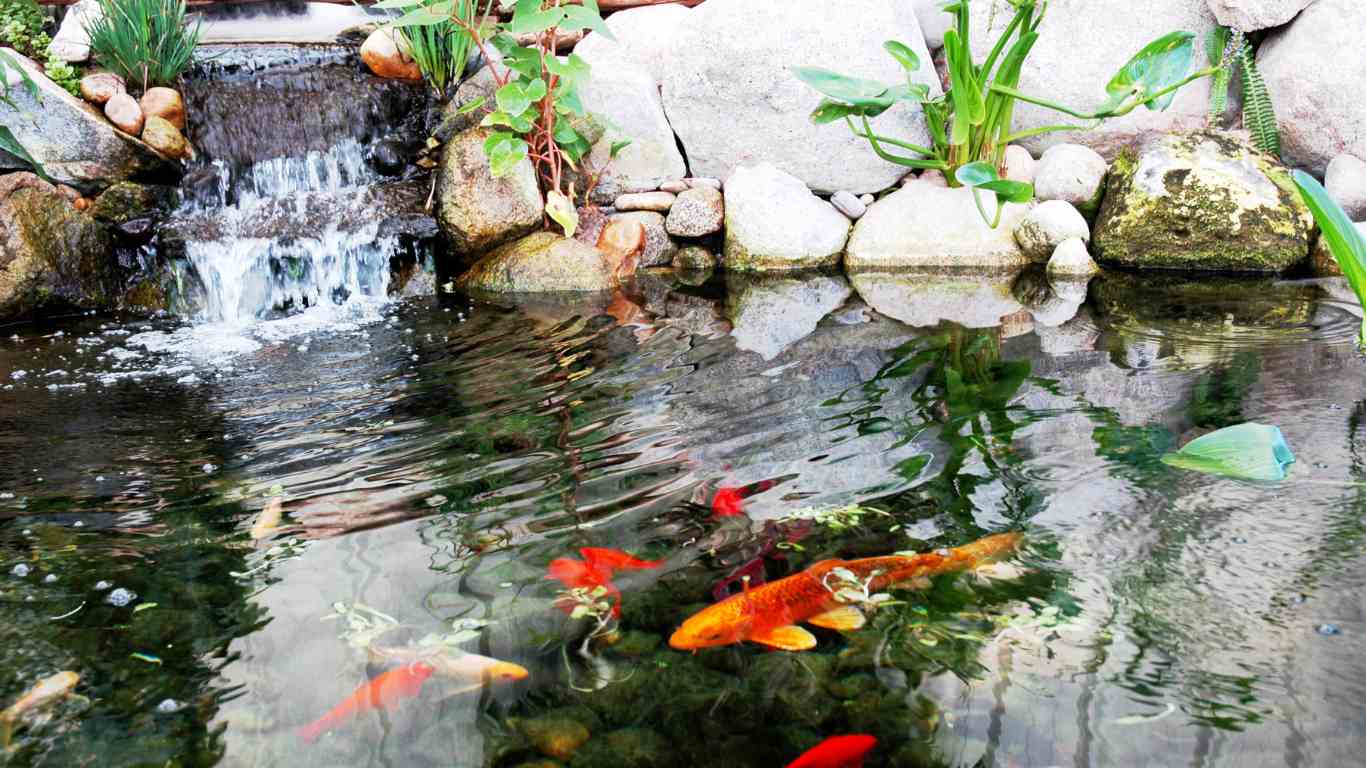

Waterfall and Stream Features
Waterfall and stream features not only add visual interest to your koi pond but also help to oxygenate the water and create a natural flow. When designing your waterfall or stream, consider the size and flow rate of your pump, the height and width of your waterfall, and the placement of rocks and plants to create a natural-looking feature.
In summary, designing your koi pond requires careful consideration of size, depth, shape, and style. Adding a waterfall or stream feature can enhance the beauty and health of your pond. Keep in mind that a well-designed pond will provide a beautiful and healthy environment for your koi to thrive.
Preparing Your Koi Pond for Spring
When spring arrives, it’s time to prepare your koi pond for another season of enjoyment. Here are some essential steps to take to ensure that your pond is ready for your fish and plants.
Cleaning the Pond
Before opening your pond in the spring, it’s crucial to clean it thoroughly. Here are some steps to follow:
- Remove any debris, such as leaves, twigs, and dead plants, that accumulated over the winter.
- Drain the pond and scrub the sides and bottom with a pond brush or pressure washer.
- Rinse the pond thoroughly with a garden hose.
- Refill the pond with fresh water and add dechlorinator if necessary.
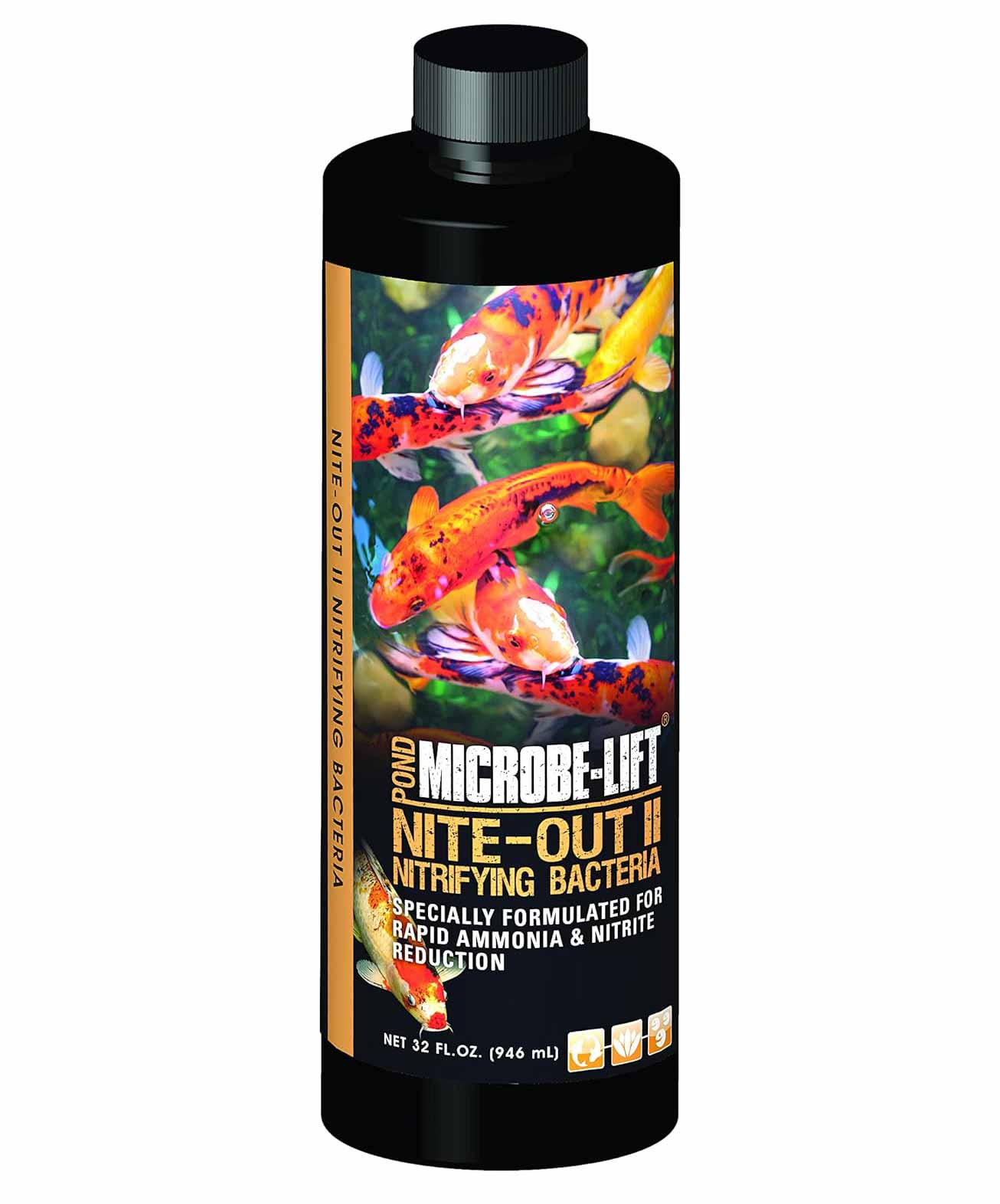

Water Cleaner for Outdoor Ponds and Water Gardens
Checking Equipment
To ensure that your pond’s equipment is in good working order, follow these steps:
- Check the pump and filter to make sure they are clean and functioning correctly.
- Inspect the UV sterilizer and replace the bulb if necessary.
- Make sure that the aerator and fountain are working correctly.
- Check the pond’s lighting and replace any burned-out bulbs.
Water Quality Assessment
Maintaining proper water quality is essential for the health of your koi and other pond inhabitants. Here are some things to check:
- Test the water pH, ammonia, nitrite, and nitrate levels using a water test kit.
- Adjust the pH level if necessary using a pH adjuster.
- Add beneficial bacteria to the pond to jumpstart the biological filtration process.
- Monitor the water temperature and wait until it stabilizes to 50-55 F before adding fish to the pond.
By following these steps, you can ensure that your koi pond is ready for another season of enjoyment.
Introducing Koi to the Pond
When adding new koi to your pond, it is essential to take the necessary steps to ensure a smooth transition. This section will cover two important sub-sections: Choosing Your Koi and Acclimating the Koi.
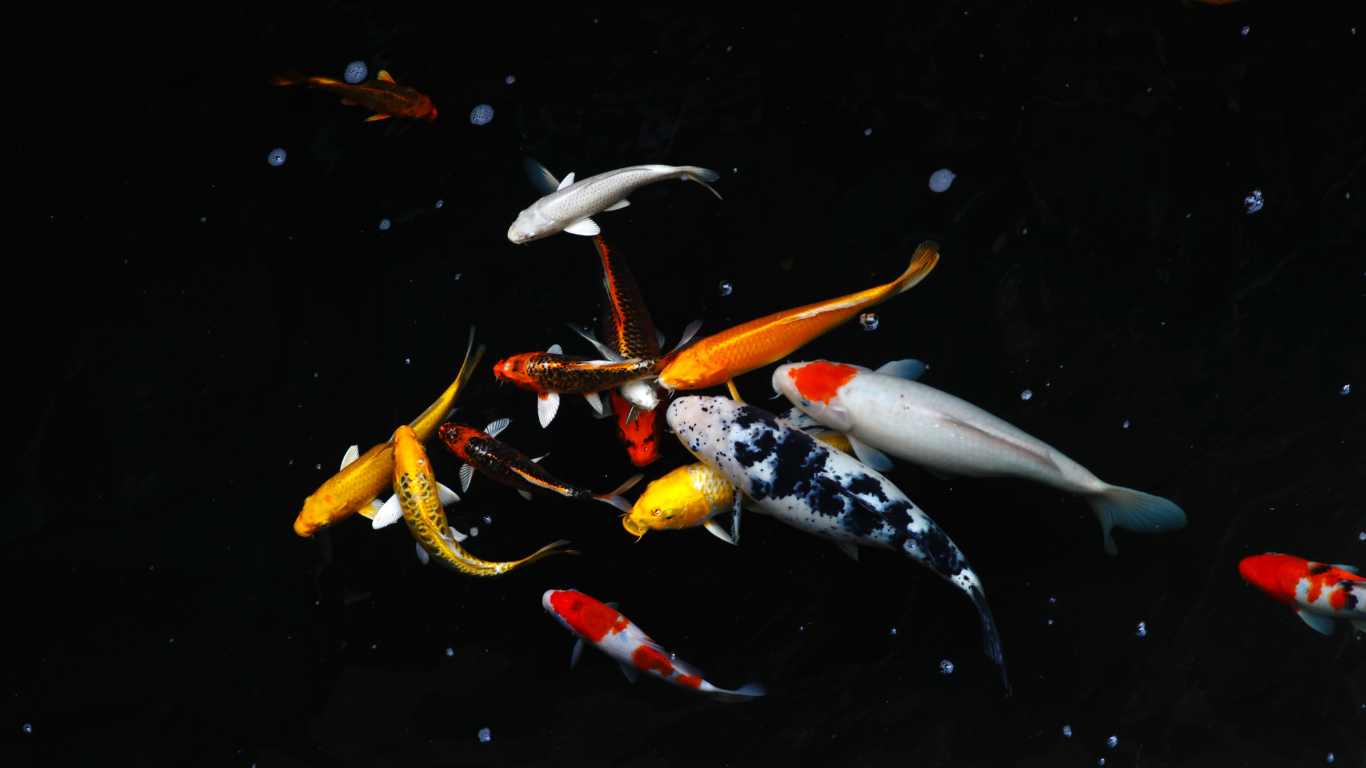

Choosing Your Koi
Choosing the right koi for your pond is crucial. When selecting koi, consider factors such as size, color, pattern, and finnage. It’s important to choose koi that are healthy and free from disease. Here are some tips to help you choose the right koi for your pond:
- Look for koi that are active and swimming around.
- Check for any signs of disease, such as white spots or torn fins.
- Choose koi that are appropriate for the size of your pond.
- Consider the color and pattern of the koi, as they will add beauty and interest to your pond.
Acclimating the Koi
Acclimating your koi to the pond is critical to their health and survival. Here are some steps to follow when introducing your new koi to the pond:
- Float the bag containing the koi in the pond for 15-20 minutes. This will allow the temperature in the bag to adjust to the temperature of the pond.
- Open the bag and add a small amount of pond water to the bag. Repeat this process every 5 minutes for 30 minutes. This will allow the koi to acclimate to the water chemistry in the pond.
- Use a net to gently remove the koi from the bag and place it in the pond. Be sure to release the koi in a calm and quiet area of the pond.
- Monitor the koi closely for the first few days to ensure that it is adjusting well to the pond. Watch for signs of stress, such as lethargy or loss of appetite.
By following these steps, you can introduce new koi to your pond safely and successfully.
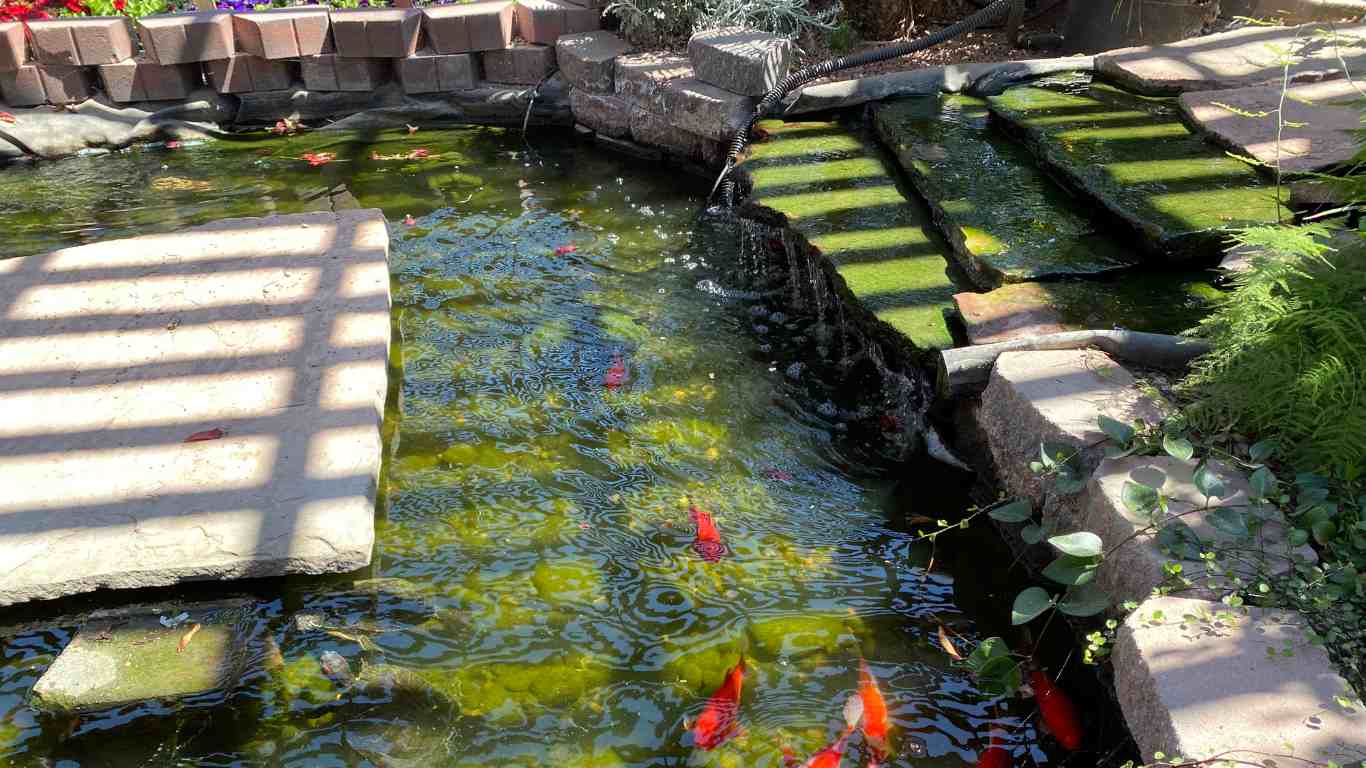

Maintaining Your Koi Pond
As a responsible koi pond owner, it is important to maintain your pond regularly to ensure the health and well-being of your koi fish. Here are some tips on how to maintain your koi pond during the spring season.
Feeding the Koi
During the spring season, koi fish become more active and require more food. However, be careful not to overfeed them as this can lead to poor water quality and health problems. A general rule of thumb is to feed your koi fish a small amount of food that they can consume within five minutes, two to three times a day. You can also use a feeding ring to prevent food from floating away and to ensure that all fish get their fair share.
Monitoring Water Conditions
Regularly monitoring the water conditions in your koi pond is crucial to maintaining a healthy environment for your fish. Test the water regularly for pH, ammonia, nitrite, and nitrate levels. Keep the pH level between 7.0 and 8.5 and ensure that the ammonia and nitrite levels are at zero. Nitrate levels should be kept below 40 ppm. You can use a water testing kit to measure these levels accurately.


JOIN OUR COMMUNITY AND GET A FREE E-BOOK
Preventing and Managing Algae Growth
Algae growth is a common problem in koi ponds during the spring season. To prevent and manage algae growth, ensure that your pond receives at least six hours of sunlight per day. You can also add pond plants like water lilies and lotus to provide shade and reduce sunlight exposure. Additionally, you can use an algae control product that is safe for koi fish. Be sure to follow the instructions carefully and avoid overuse.
In conclusion, maintaining your koi pond during the spring season is crucial to ensuring the health and well-being of your koi fish. Regularly feed your fish, monitor water conditions, and prevent and manage algae growth to keep your pond clean and healthy.
Frequently Asked Questions
When is the ideal time to start up a koi pond in the spring?
The ideal time to start up your koi pond in the spring is when the water temperature reaches a stable range of 50-55°F. It’s important to monitor the water temperature before doing anything to ensure the health and well-being of your koi fish.
What steps should I take to prepare my koi pond for spring?
To prepare your koi pond for spring, you should start by cleaning up any debris left over from the previous fall and winter. You should also check that your pond aerators, pump, and skimmer are functioning properly. It’s important to monitor the water quality and add any necessary water treatments to help balance the pH levels.
How often should I clean my koi pond in the spring?
You should clean your koi pond in the spring as often as necessary to maintain a healthy and clean environment for your fish. This may vary depending on the size of your pond and the amount of debris that accumulates. It’s important to remove any dead leaves, twigs, and other debris as soon as possible to prevent them from decomposing and polluting the water.
What are some effective methods for controlling algae in a koi pond?
Some effective methods for controlling algae in a koi pond include adding aquatic plants, using a UV sterilizer, and reducing the amount of sunlight that reaches the water. It’s important to maintain a proper balance of nutrients in the water and to avoid overfeeding your fish, which can contribute to algae growth.
When should I begin feeding my pond fish in the spring?
You should begin feeding your pond fish in the spring when the water temperature reaches a stable range of 50-55°F. Start with a small amount of food and gradually increase the amount as the water temperature rises. It’s important to monitor the water quality and adjust your feeding schedule accordingly.
What are some essential spring maintenance tasks for a koi pond?
Some essential spring maintenance tasks for a koi pond include cleaning the pond, checking the equipment, adding water treatments, and monitoring the water quality. It’s also important to keep an eye out for any signs of illness or disease in your fish and to take appropriate action if necessary.
 1 (509) 228-8646
1 (509) 228-8646


